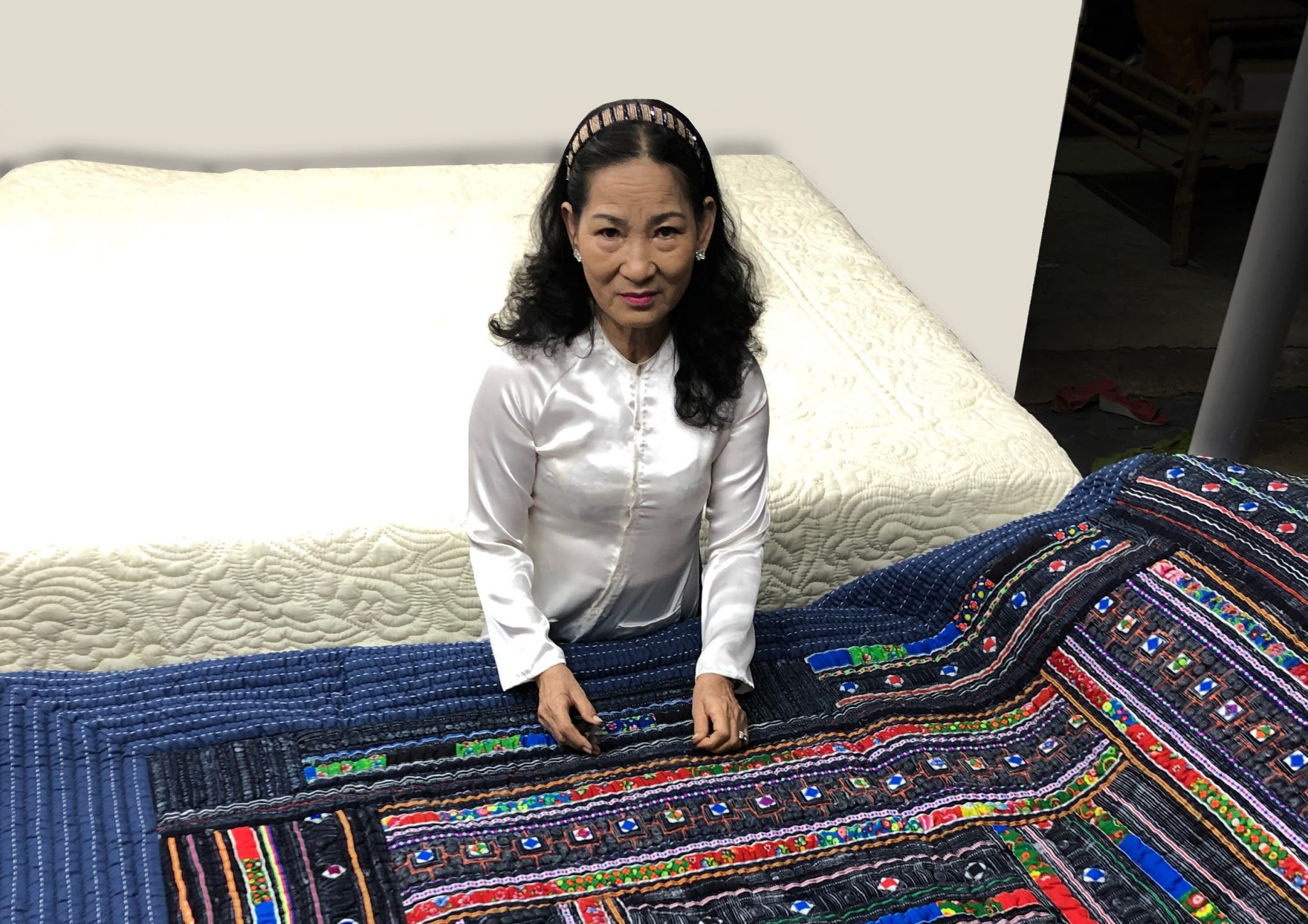Extract from Mekong Quits
Madam Hoàng Thi Vân Lan had never seen quilts before Mekong Quilts first arrived in her village 16 years ago. And in fact, she did not see foreigners for a while after Vietnam’s reunification in 1975.
“I was born in Danang city, but moved right after the end of the war,” she explained. As Da Nang lost its charm when the country slowly began to recover from the shambles of war, her family moved to the rural Đuc Linh District of Vietnam’s South Central Coast.
Perhaps it was fate, but she was also one of the first locals that Bernard Kervyn met when he arrived in the district more than two decades ago with Mekong Plus, an organization that vowed to eradicate poverty in Vietnam.
“Life was difficult in the early 90s,” she said, as she began a verbal summary of her biography in brief.
“There wasn’t much work to do, [so] my father raised fowl and pigs to feed the family. Other than the provincial paved roads, it was mostly mud roads in our village.”
Fortunately, flooding was not a common occurrence in Đuc Linh. But life was difficult with regular droughts and power outages.
A TURNING POINT IN LIFE
In 2000, Lan’s husband died in a motorbike accident, leaving her a widow with four children.
“Two of my children dropped out from school. [And] my eldest son fell into depression when he was unable to find work after graduating,” Lan relayed. Not too long after and against all odds, Lan was recruited into Mekong Quilt’s first quilting team and began working in both her village as well as in Ho Chi Minh City.
“[Initially] it took me 20 days to complete a full set of quilt beddings. [But] after about six months of guidance, I was able to complete a full set in just two weeks.”

FROM JUST A QUILTER TO MORE THAN A TEAM LEADER
As Mekong Quilts’ scale of production grew, Lan was appointed leader of several quilting teams and was regularly sent around the country to assist with coordination and training. All of Mekong Quilts products feature three layers of fabric, and Lan takes part in the social enterprise’s extensive quality control practices to ensure that no flaws are found on any product before they are handed over to the packaging department.
Lan notes that the most complicated items to complete and check are ones with complex shapes and patterns, including Mekong Quilts popular line of animal motif quilts designed with children in mind.
“The animal portions of the full piece have to be completed first, taking almost three times the amount of time!”
For her and other quilters, time and effort is sometimes accompanied by physical pain.
“You know, [for us quilters], getting pierced by needles is an almost daily affair!” She said as she laughed.
Ultimately, Lan believes that the social entreprises’ success lies in its fundamentally sound organisational practices. Everyone is trained to perform well in their own individual roles and tasks.
“[The] sewing department, patchwork department, quality control [department], packaging [department]. Everyone needs to be coordinated!” She explained. This ensures that customers receive goods on time without any unpleasant surprises. […]



